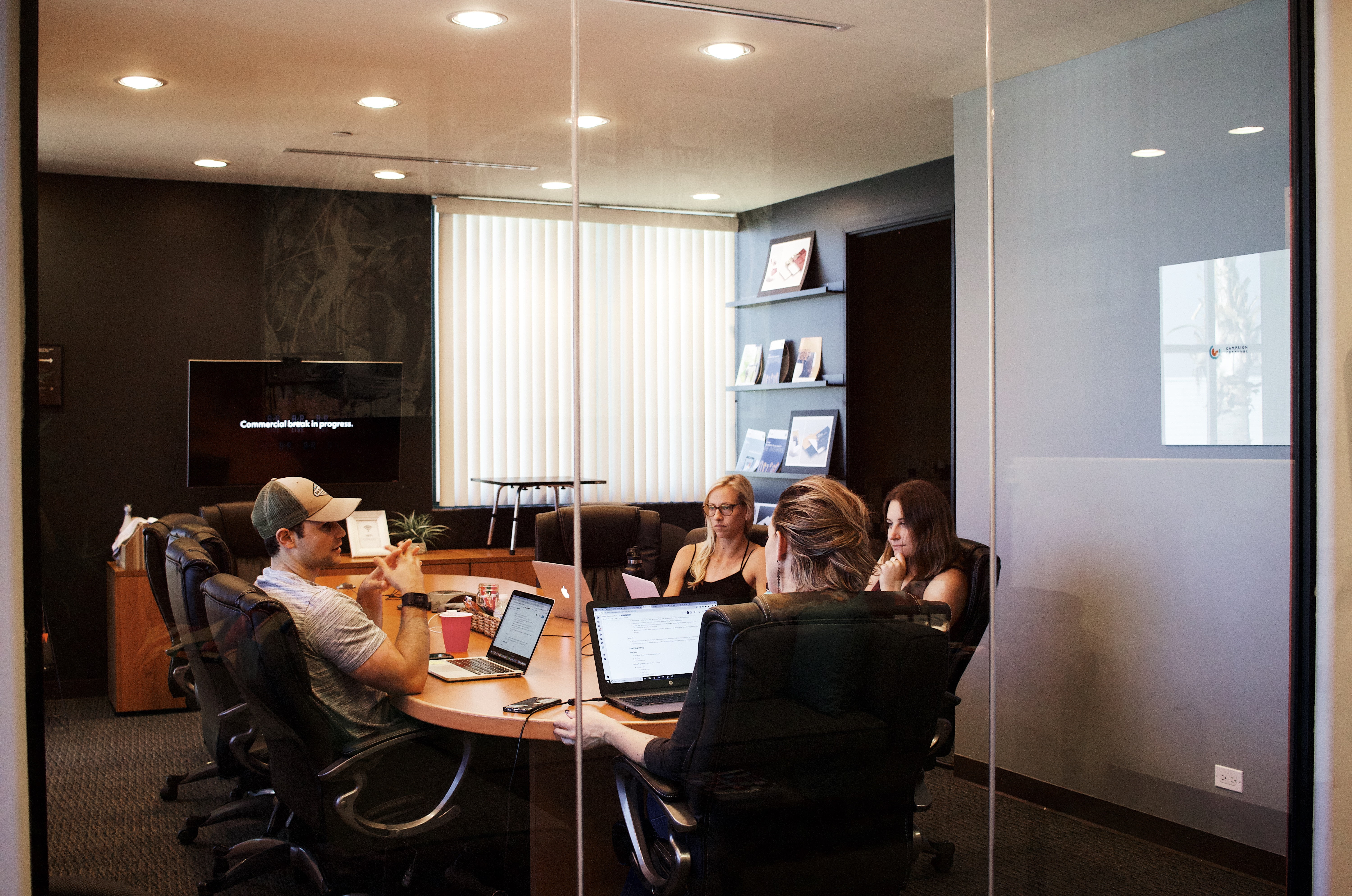
What Does a Productive Huddle Space Look Like?
Collaboration is often the key to converting innovations into realities. Unfortunately collaboration is not always as easy in practice as it seems in theory.
True collaboration only occurs when you can conveniently connect key players within an environment that provides all the tools they need. That can be a tall order in today’s trendy open office spaces or in large organizations where it’s difficult to connect personal from multiple departments such as engineering, finance and marketing.
When properly equipped, huddle spaces or campsites are an attractive solution. By design huddle spaces provide a convenient location to meet, collaborate and innovate. Of course, a little planning can go a long when designing and deploying huddle spaces within your office environment.
Creating your own huddle spaces
Comfortable and convenient. Remember there is a significant between a huddle space and a conference room. Although some functionality is comparable, huddle spaces are often intended for smaller groups conducting impromptu meetings rather than former discussions or lengthy presentations. If a huddle space is tucked away in a dark corner, no one will use it (other than taking a power nap).
Ideally, huddle spaces should be along common walkways. Comfortable seating with built in flexibility makes any huddle space attractive for in-the-moment usage. Additionally, environmental controls such as the ability to manage lighting can contribute significantly to usability. Likewise the ability to block out distractions from the open office environment using blinds or flexible space partitions can contribute to the huddle space’s effectiveness.
Productive and functional. Yes, huddle space are informal by design. However, their purpose remains clear — harnessing the outcomes of often unplanned collaboration and innovation. As such, easy access to technology is just as important as comfort and convenience. For instance, smart boards for interactive brainstorming as well as high resolution displays for content sharing. Interactive displays could also play a meaningful role in huddle spaces.
When selecting technology keep in mind that most team members will enter these engagements with their personal smart devices. The ability to leverage these devices only enhances effectiveness of any tech deployment, making widespread compatibility a must. Also, make sure network access is both convenient and ample to provide uninhibited access to any assets team members may need.
Conferencing capabilities. There is huge value in impromptu collaboration opportunities. However, in order to make timely decisions it’s sometimes necessary to add others into the discussion. This is true whether it’s someone from another department who works remotely, a teammate based at another company facility or even an external partner.
Having easy to use unified communications and conferencing capabilities built into each huddle space facilitates expanded interactions when needed. The key here is to embrace a solution that people are comfortable using. Something that works seamlessly with other technologies they are already using.
Bottom line: Remember the goal of any huddle space is to encourage and facilitate small group collaboration and innovation. As such, huddle spaces should be able to seamlessly evolve as workplace needs change. Keeping a constant pulse on team needs can prove pivotal in getting the most out of these crucial spaces.
Victoria Cosgrave
Victoria Cosgrave, Field Marketing Manager, Enterprise at Electrosonic, has wide-ranging experience of technology within professional services, financial services, infrastructure, transport, pharmaceuticals and government. Her knowledge and experience enables her to write about the technological landscape and the issues facing clients with great insight.










.jpg?width=1500&height=995&name=ELC501_N17_medium%20(1).jpg)








































































































































































































